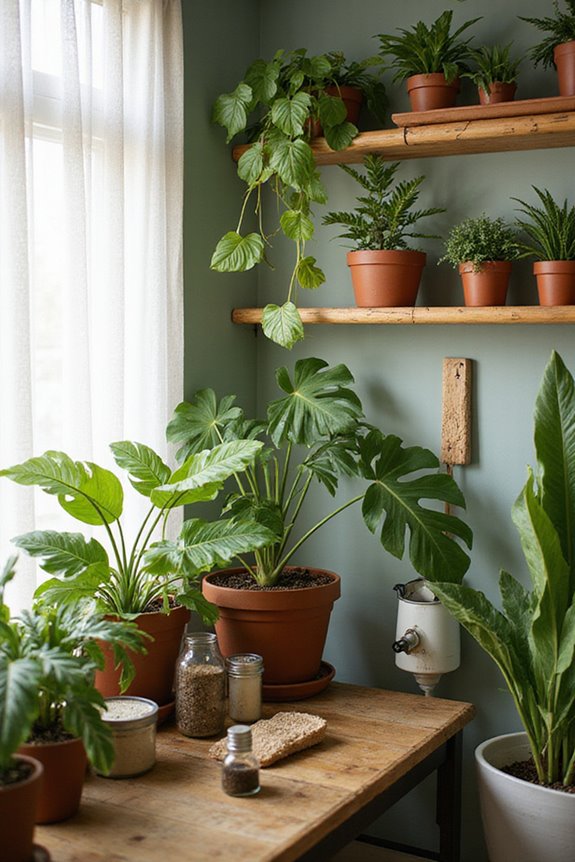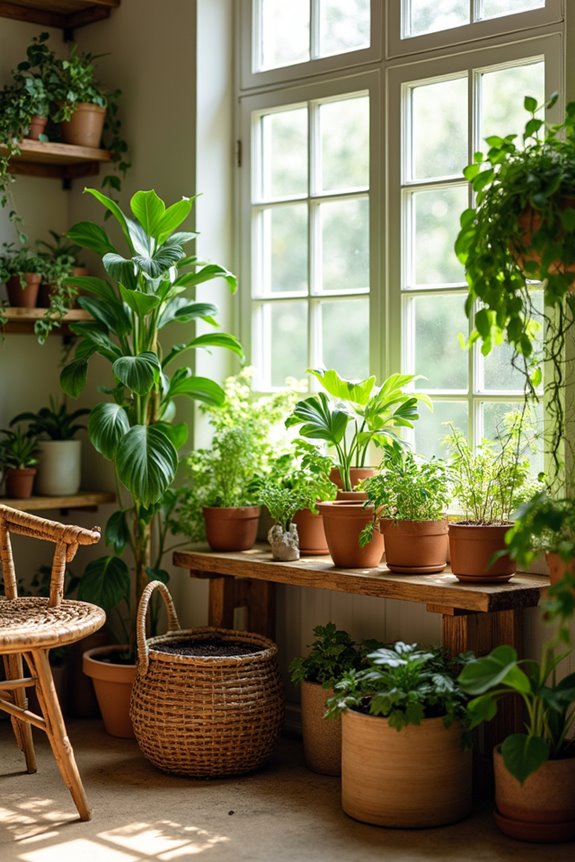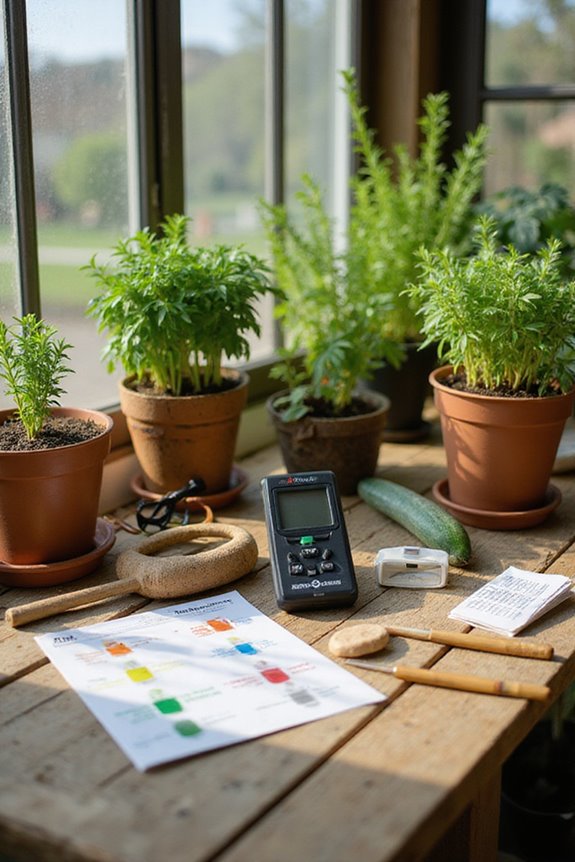Advanced plant care techniques improve plant health and productivity. We can use hydroponics for ideal nutrient delivery and employ methods like micropropagation to grow multiple identical plants quickly. Overwintering practices, such as mulching and insulation, protect roots from cold. Additionally, precise soil mapping and real-time monitoring of moisture and nutrients enhance soil and growth medium optimization. By understanding seed germination and early growth, we set our plants up for success. There’s much more to explore on these topics.
Key Takeaways
- Employ hydroponic techniques by removing soil, inspecting roots, and ensuring proper nutrient solution management for optimal plant health.
- Utilize micropropagation and grafting methods to produce genetically identical plants and combine desirable traits effectively.
- Implement seasonal care strategies such as mulching and insulation to protect plants’ roots during winter months.
- Optimize soil health through precision mapping, real-time monitoring, and no-till farming to enhance crop yields.
- Monitor seed germination rates and environmental factors to refine planting strategies and improve early growth outcomes.
Hydroponic Plant Care Techniques
Hydroponic plant care techniques are fundamental for successful indoor gardening. First, we need to start with thorough soil removal, rinsing all soil from plant roots to prevent rot. During root inspection, we should check for mushy or dark roots and only keep healthy ones. Proper placement in net pots is essential for optimal nutrient management.
Next, we must guarantee roots are partially submerged in a nutrient-rich solution, avoiding full submersion. Regular monitoring of the nutrient solution’s strength and pH is critical as plants grow. We should replace the water every 1-2 weeks to maintain oxygen levels. By practicing these techniques together, we can foster a thriving hydroponic garden that produces healthy plants and bountiful harvests.
Advanced Propagation Methods
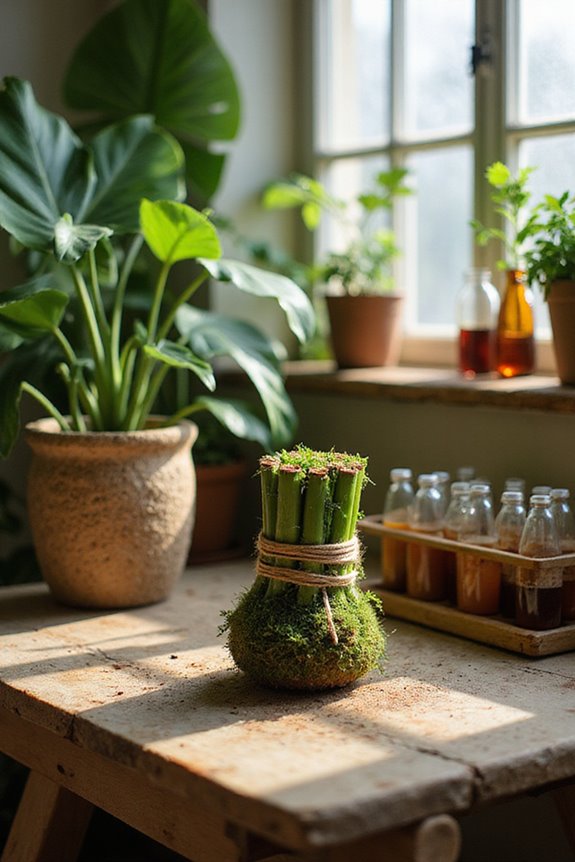
Advanced propagation methods are essential for expanding our plant collections efficiently. One effective technique is micropropagation, where we grow plants from small tissue samples in sterile conditions. This method allows us to produce numerous genetically identical plants quickly, which is great for urban forestry and rare species conservation.
Another valuable approach is grafting methods. By joining a scion and rootstock, we can combine desirable traits like disease resistance and high yield. Common graft types include splice and bud grafts.
We can also use air layering, where we induce roots on a branch while it’s still attached to the parent plant. Each of these methods enhances our ability to cultivate strong, healthy plants and enrich our gardening community.
Overwintering and Seasonal Care
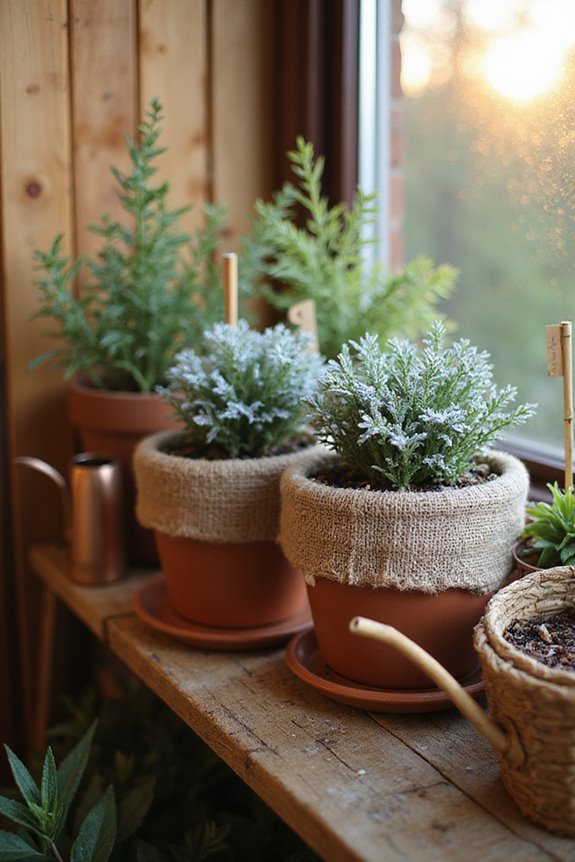
When preparing our gardens for winter, understanding how to properly overwinter our plants can make all the difference. Here are some key techniques for effective winter insulation and temperature management:
- Mulching: Apply 6 to 18 inches of loose mulch, like straw or pine needles, to protect roots. For perennials, use 3-4 inches of heavier mulch, such as shredded bark.
- Physical Barriers: Use chicken wire to hold mulch in place against winter winds.
- Insulation Covers: Utilize microfoam covers on container plants to keep root temperatures stable.
- Site Selection: Place vulnerable plants near structures for added protection against cold winds.
- Monitoring: Regularly check soil temperatures to know when to remove insulation. Additionally, proper timing in your gardening practices ensures that plants are adequately prepared to withstand winter conditions.
These practices help guarantee our plants thrive through the cold months.
Soil and Growth Medium Optimization
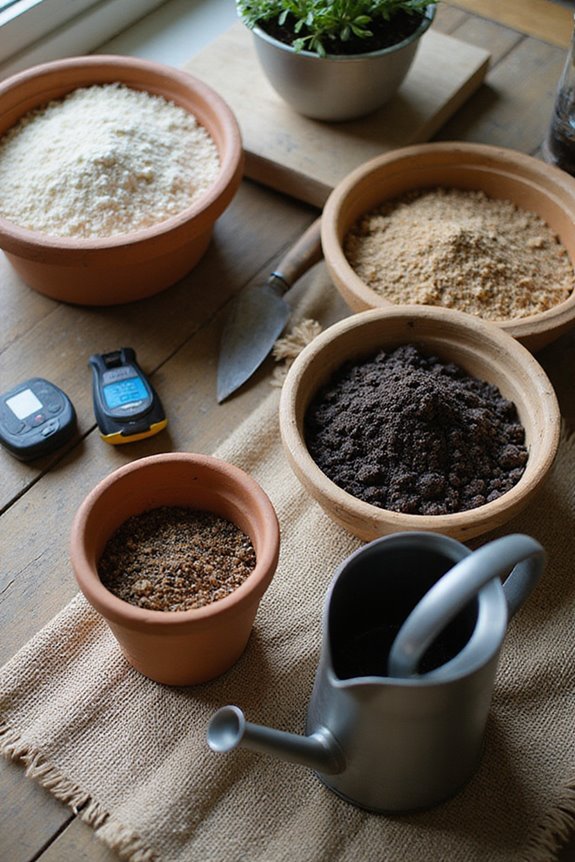
Optimizing soil and growth mediums is essential for fostering healthy plant development. We can enhance soil health by employing precision soil mapping, which analyzes soil variability to boost crop yields by up to 20%. Utilizing advanced sensors allows for real-time monitoring of moisture, pH, and nutrient levels, enabling us to make informed nutrient management decisions.
Here are some key techniques:
- Soil Testing: This guides our fertilization schedules, reducing excess fertilizer use and runoff.
- Cover Cropping: This practice protects soil from erosion and increases organic matter.
- No-Till Farming: This minimizes soil disturbance, promoting beneficial microbes.
Seed Germination and Early Growth Techniques
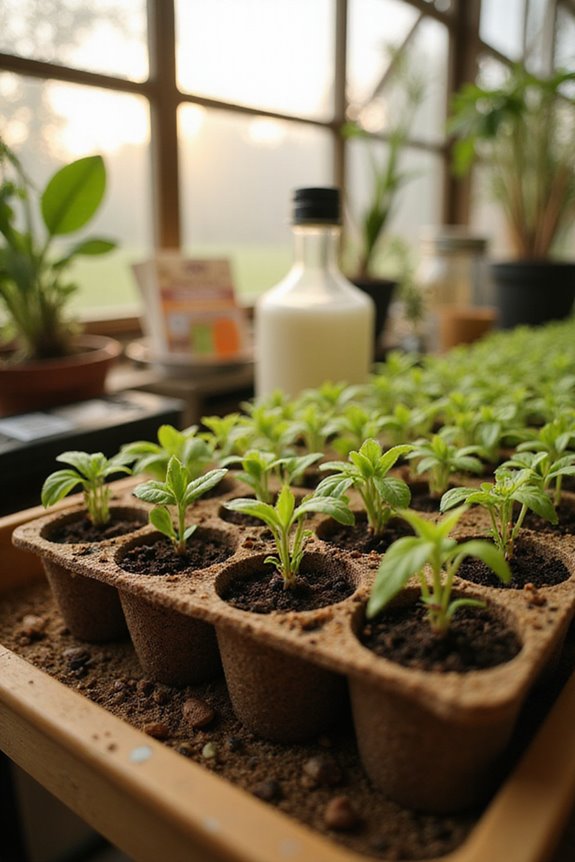
Seed germination and early growth are critical stages in a plant’s life cycle, as they set the foundation for future development. To guarantee success, we should focus on seed viability and measure germination indices.
- Germination Percentage: We calculate this with (G (%) = frac{sum n_i}{N} times 100) to assess how many seeds germinate.
- Mean Daily Germination: This metric, ( bar{G} = frac{GP}{T_n} ), helps us track germination speed.
- Environmental Factors: Conditions like osmotic stress can slow germination by up to 57%.
Using advanced tools like Excel and statistical software, we can analyze these indices effectively. By understanding these techniques, we can improve our planting strategies together.
Frequently Asked Questions
How Do I Identify Plant Diseases Effectively?
To identify plant diseases effectively, we should observe disease symptoms closely and utilize various diagnostic tools like PCR or ELISA. By sharing our experiences, we can enhance our understanding and support each other in plant care.
What Are the Best Organic Pest Control Methods?
When we think about the best organic pest control methods, we can’t overlook natural insecticides and companion planting. Together, they help create a thriving ecosystem, fostering healthy plants and reducing pests without harmful chemicals.
How Can I Tell if My Plant Needs Repotting?
We can spot repotting signs like roots escaping drainage holes or slow growth. If the plant’s pot size feels too snug, it’s time to give our green friend a more spacious home for thriving!
What Are the Signs of Nutrient Deficiencies in Plants?
Like a detective solving a mystery, we can spot nutrient symptoms in our plants. Deficiency signs include yellowing leaves, purplish hues, and crinkled edges, guiding us to nurture them back to health together.
How Do I Improve Air Circulation Around My Plants?
To improve air circulation around our plants, we can use gentle fans and practice strategic pruning techniques. Balancing humidity control also helps create an inviting environment where our plants can thrive together, fostering our shared gardening journey.



